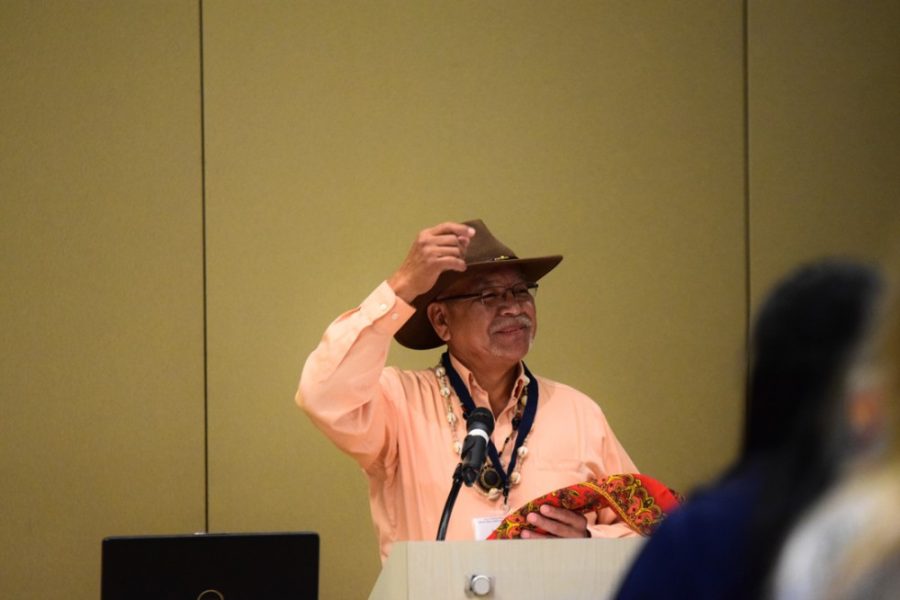The impact and importance of issues with Native American reservation land were discussed on Monday at the third annual Tribal Lands Conference at the UA.
There are 566 Native American tribes that are recognized by the federal government, and 153 of these tribes own land, said Mary Guss, a staff attorney for the Indigenous Peoples Law and Policy program. The rules and regulations over this land between tribal governments and the federal government are not always clear.
Robert Hershey is director of the Indigenous Peoples Law Clinic at the James E. Rogers College of Law, director of clinical education and professor of practice. Hershey introduced the conference, explaining that the overall goal was to “take care of the longstanding need of Native Americans to understand probates and rights.”
Many questions from the audience were aimed at the speaker, addressing both personal and larger legal concerns. Erica Wolf, the executive director of the Center for Indian Law and Policy at Seattle University, responded by saying that continued efforts are being made to better encompass everyone’s needs.
“A lot about what we talk about in Indian law is what the law is, versus what should happen,” Wolf said.
Timothy Berg, director of Fennemore Craig Law Firm in Phoenix, spoke to this issue as well.
“I think that we are doing well, but we could do better,” Berg said. “We don’t think one size is going to fit all here.”
Throughout the conference, speakers were regularly interrupted by audience members wanting more information.
“Questions are integral guides into what matters most to the people in this region,” said Wolf, going on to explain that she had not expected the audience to be so diverse, including many tribal members, government officials, attorneys, professors and students.
The conference, although held on campus, addressed several national issues.
Speaker Morgan Rodman is a former graduate of the College of Law and senior advisor for Tribal Relations at the U.S. Department of the Interior. Rodman is a citizen of both the Cherokee Nation and the Osage Nation.
“Native peoples are scattered through the four winds,” Rodman said. “[They] now live all over the world.”
Rodman added that the goal is really to improve government to government relations between the federal government and the many governments of Native Nations across America.
“Tribal issues are in all 50 states,” said Jim Wabindato, Program and Development Officer of the Indian Land Tenure Foundation and a member of the Little River Band Ottawa. “We look to provide information to Indian landowners, but we have another initiative to help educate non-Indian government officials. From our perspective, the more outsiders that know what’s going on and are in positions to work with the tribal communities, the better it is for the tribal communities.”
_______________
Follow Tirion Rose Morris on Twitter.









